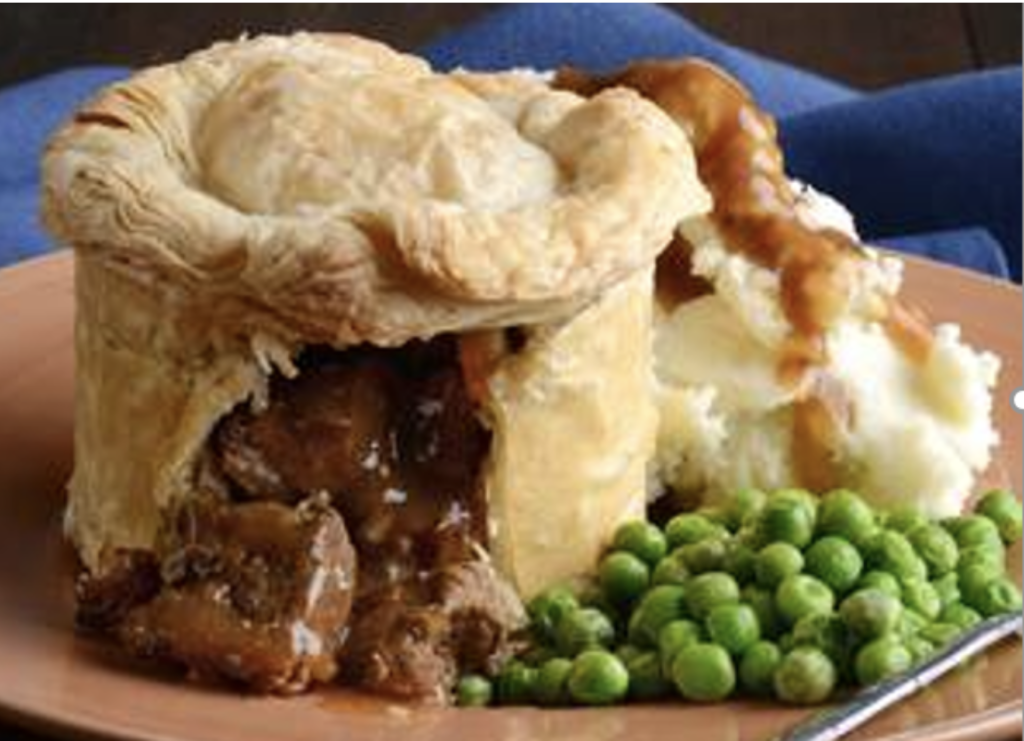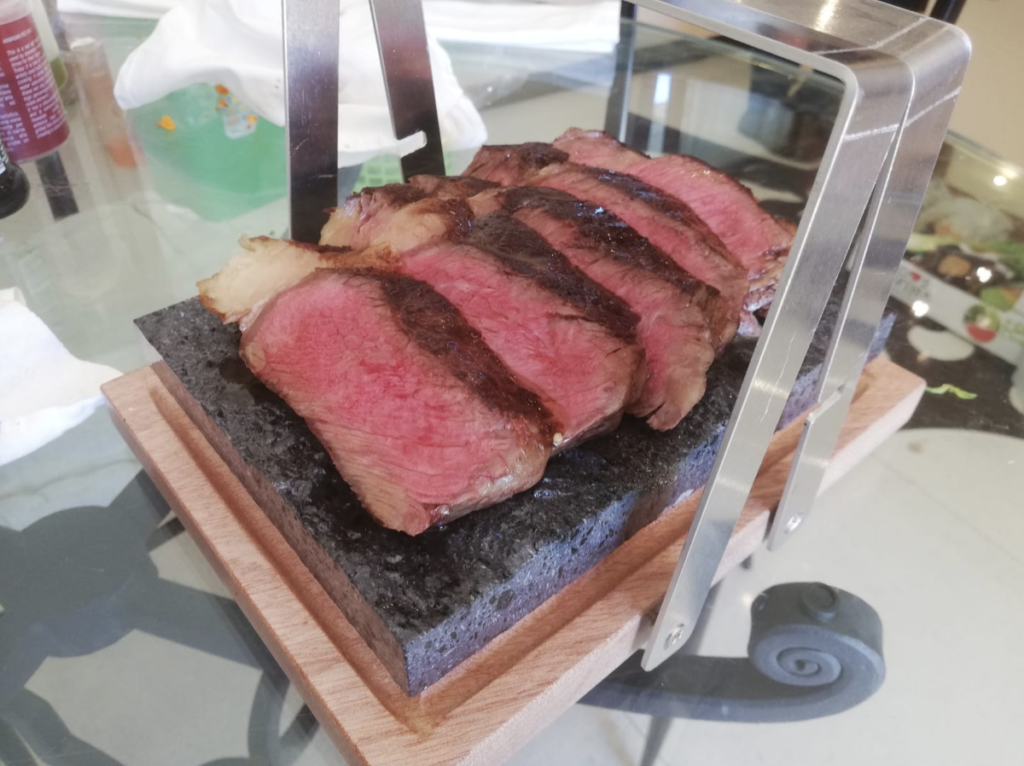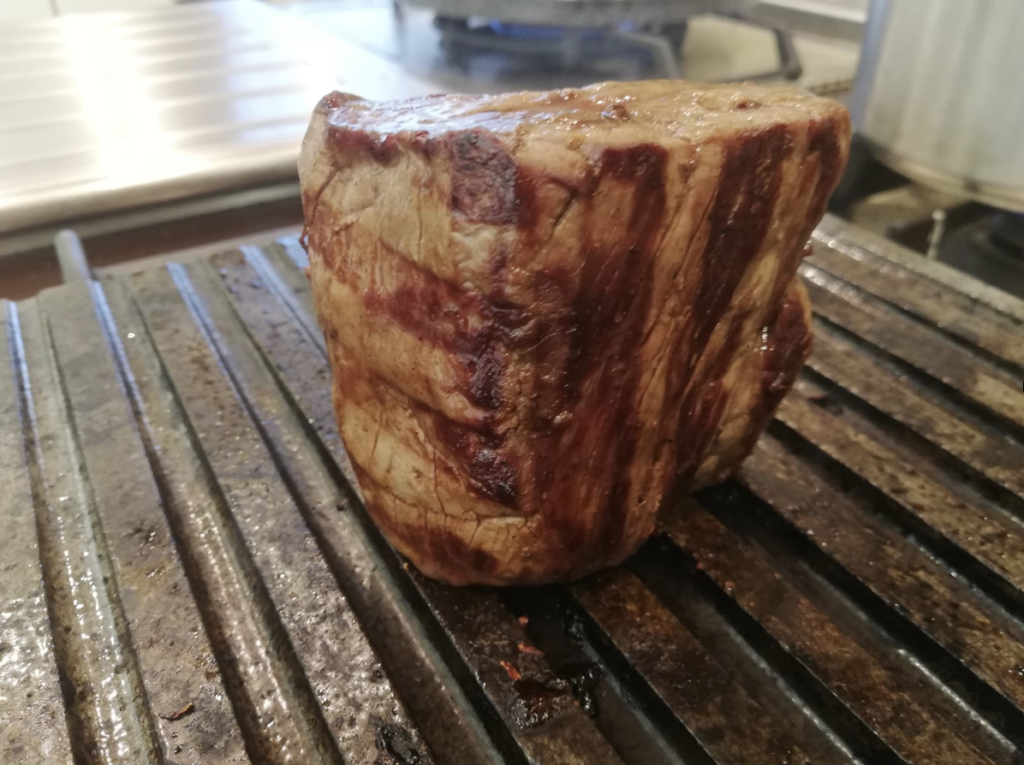
Steak and kidney pie is considered a traditional British dish consisting of a mixture of diced beef, diced kidney (can be of beef, lamb, or pork), fried onion, and brown gravy. Steak and kidney pie is therefore a representative dish of British cuisine as it continues to be loved a lot and has several rhyming slang names, including “Kate and Sydney Pie”.
Mushrooms and bacon are at times included, and various ales, notably stout, can also be added to the gravy. Steak and kidney pie dates to the 19th century and as Britain and Ireland are famous for their pies that is counted among Britain’s most desired national dishes since nothing says British more than a traditional steak and kidney pie. The recipe seems a little daunting at first but that is only because the filling needs a long and slow cooking process. This long-and-slow method generates a tender filling that leaves you lots of time to make the pastry.
Meat pie filling deserves attention as the trick is to use just the right amount to achieve the desired thickness after the pie is baked. Aussie Meat pies, for instance, are filled with beef and vegetables in a rich and delicious gravy.
This delicious comfort food is always loved by the entire family especially when Meat pie recipe is traditionally made with beef sirloin, minced quite small along with onions, carrots and mushrooms. Temps for meat cooking are also important to be taken into account as cooking times depend mostly on the cookware and heat source being used. Etnaware lava stone products grant the best result achieving juicy and tasty steak due to a perfect steak cooking temp.

It is typically known that there are six stages of steak doneness, which are all based mainly on temperature, color and flavor. Doneness is a gauge of how thoroughly cooked a cut of meat is based on its color, juiciness, and internal temperature when cooked. Gradations, their descriptions, and their associated temperatures vary regionally, with different cuisines using different cooking procedures and terminology.
For steak, common gradations include blue, rare, medium rare, medium, medium well, and well done Reaching out each of these is easier when using specialty stoneware cooking products made of lava stone from Mount Etna.
The right cookware product to manage all phases of cooking process is now available to optimize and keep under control the temperature for steak doneness because of the heat slow transfer throughout the lava stone slab thickness. Most steaks are best at medium-rare to medium. These temperatures cause the fat within the cuts to render, which allows the flavor from fat to move throughout the steak and keep it tender.
Cooking only to rare does not give the steak quite enough time to benefit from this process, and cooking to well-done can cause the meat to become chewy and lose that tenderness that steak is known for. Etnaware lava stone with its vitrified-ceramic coating will allow to reach the perfect outcome whichever is the end preference to have your steak cooked.

It is always tempting to want to cut right into your steak to inspect the inside and see if it is done to your liking, but refrain from doing this until you let your meat rest for approximately 10-15 minutes.
This rest period gives the steak time to get its juices flowing back through the meat and finish cooking to your liking.
Etnaware lava stone products will never require you to check the inside because the whole cooking process is gradual and smooth so that will allow to have full control of steak cooking times up to the desired gradation amongst any of those.

© 2024 Pampa Lava Stone - Summit Global Supplies Srl - VAT NO. 01621980893
Realizzazione Siti Web by Nautilus Adv